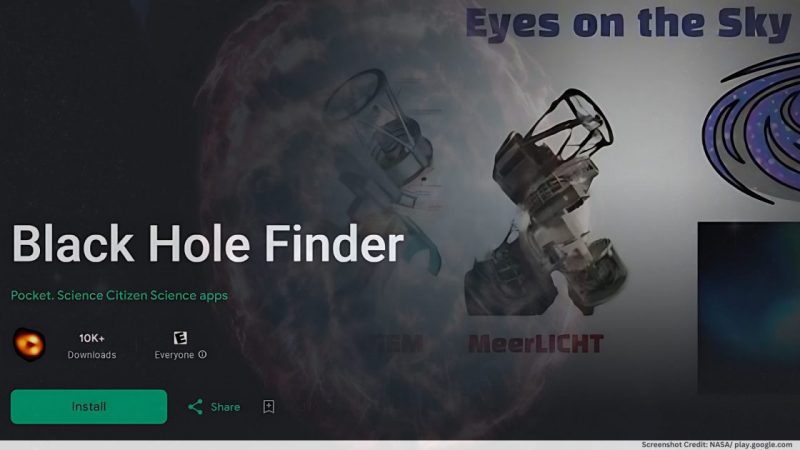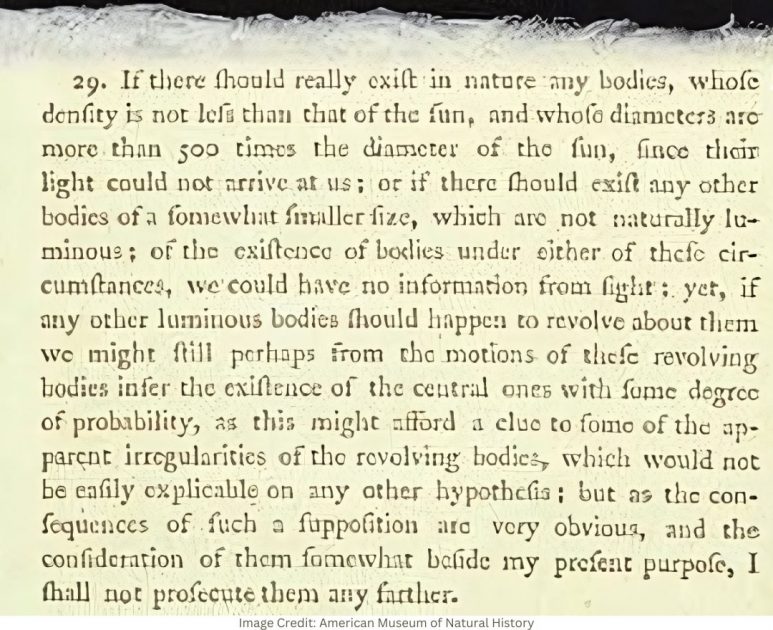Scientists Plan to Enhance Black Hole Research Through Participatory Science and a Simple App

The quest to uncover the secrets of black holes has entered a new phase. The Dutch Black Hole Consortium’s newest project invites the public to participate in exploring these enigmatic cosmic objects called kilonovas and contributing to research via a simple smartphone app. As an example of participatory science, this program makes use of a combination of cutting-edge technology and collective human effort to address one of astronomy’s greatest challenges.
The Black Hole Finder App: A Revolutionary Tool
The Black Hole Finder app represents a pioneering effort to democratize astronomical research. It enables users worldwide, regardless of their scientific background, to contribute to the discovery and study of black holes by assisting scientists in identifying potential black holes from telescope images, thereby expanding public participation in advanced scientific research. The app targets a specific cosmic phenomenon – the kilonova, an explosive event that occurs when a neutron star merges with a black hole. Theoretically, these events have the potential to create new stellar-mass black holes.
The Black Hole Finder app uses data from the BlackGEM telescope array in Northern Chile, which scans the sky for kilonovas. This data includes a mix of genuine astronomical events and false positives, such as reflections from satellites. The app’s primary role is to help differentiate between these by presenting users with images and asking them to classify them as real or false sources. This process aids in training artificial intelligence (AI) algorithms to better identify black holes.
“People are much better at identifying patterns than our algorithms,” noted Steven Bloemen, project manager of the BlackGEM telescopes. Bloemen’s statement clearly highlights how crucial the role of human input is in improving the accuracy of automated systems. The app’s design, which is available in eight languages including English, Spanish, and Chinese, ensures that a global audience can contribute to this collective scientific endeavor.
The Role of Participatory Science in Astronomy
In recent years, participatory science – often referred to as citizen science – has seen increasing interest, providing the public with opportunities to directly engage in scientific research. The Black Hole Finder app is another prime example of how this approach can be applied to complex astronomical research as well. By leveraging the collective efforts of thousands of users, scientists can process and analyze vast amounts of data more efficiently.
Historically, black hole research has been confined to advanced telescopes and specialized algorithms, such as those used by the Event Horizon Telescope (EHT) collaboration to capture images of black hole shadows and analyze their data. In contrast, previous methods largely depended on indirect measurements and theoretical models to infer the presence and properties of black holes. The Black Hole Finder app, however, empowers ordinary people to participate in this process by making simple decisions about image authenticity. This contribution plays a crucial role in identifying kilonovas and, ultimately, black holes.
Moreover, this project aligns with the broader trend of integrating public participation into scientific research. Previous projects like the SETI@home project, which involved analyzing radio signals from space, have demonstrated the potential of citizen science in processing large datasets. The Black Hole Finder app builds on this tradition by offering a more accessible and engaging way for people to contribute to the scientific community.
Enhancing AI with Human Intelligence
One of the key objectives of the Black Hole Finder app is to improve AI algorithms used in black hole research. While AI has advanced significantly in recent years, it still struggles with distinguishing between true and false astronomical sources, especially in noisy data environments. But human users, with their pattern recognition skills, can provide a valuable supplement to these algorithms.
The app’s interface is designed to be user-friendly, capable of guiding participants through a brief tutorial before they start classifying images. This technique ensures that even those with no prior experience in astronomy can contribute effectively. Once users have classified images, the data they provide is used to refine and enhance the AI algorithms. This iterative process enhances the accuracy of models for detecting black holes and deepens our understanding of other mysterious cosmic phenomena on a broader scale.
For particularly dedicated users, the app offers a “Super User” status, achieved by identifying 1,000 transients. This status grants access to advanced features, such as requesting follow-up observations for recent transients. This additional level of engagement not only motivates users but also provides valuable data that can further improve research outcomes.
Historical Context and the Evolution of Black Hole Discovery
Understanding the significance of the Black Hole Finder app requires a look at the history of black hole research.
The concept of a black hole dates back to the 18th century when John Michell, in a letter published in November 1784, first proposed the idea of an object so dense that light could not escape its gravitational pull.

This early prediction laid the groundwork for modern black hole research, which has evolved significantly over the centuries.
The first widely accepted black hole discovery was Cygnus X-1 in 1971, identified by Paul Murdin and Louise Webster. This discovery marked a turning point in black hole research, providing the first concrete evidence of their existence. Since then, the field has seen remarkable advancements, including the detection of gravitational waves from colliding black holes in 2015 and the first direct image of a black hole’s shadow in 2019.
These milestones demonstrate the rapid progress in black hole research over the last few decades, driven by technological innovations and theoretical advancements. In this phase of speedy progress, the Black Hole Finder app represents the next step in this evolution, combining modern technology with participatory science to push the boundaries of our understanding.
Public Participation and Future Outcomes
The success of this project is crucial for advancing human exploration and enhancing civilization beyond current imagination, as it could lay the foundation for similar initiatives in other areas of astronomy and science. If successful, it will show that, by harnessing the power of collective human intelligence and advanced technology, scientists can tackle some of the most challenging questions in modern science.
For those enthusiastic about contributing to modern science and technology, this is one of the best opportunities to engage in significant scientific discovery through the Black Hole Finder app. As users around the world participate in this program, they will contribute to a global effort to explore the cosmos and uncover the mysteries of black holes. This approach not only enhances our understanding of the universe but also demonstrates the power of participatory science in advancing scientific progress through human intellect, rather than relying solely on human-made tools such as AIs and algorithms.
If you’re interested in black holes and wish to contribute to scientific research, consider downloading the Black Hole Finder app to join a global community of citizen scientists and help advance our understanding of these cosmic mysteries.


